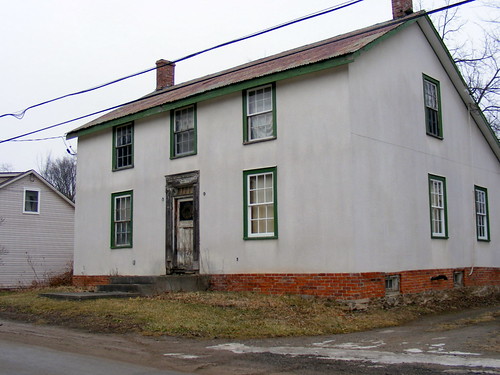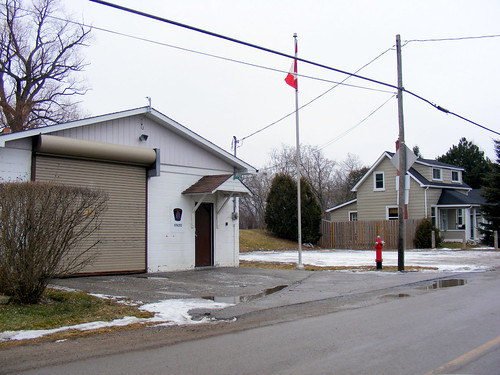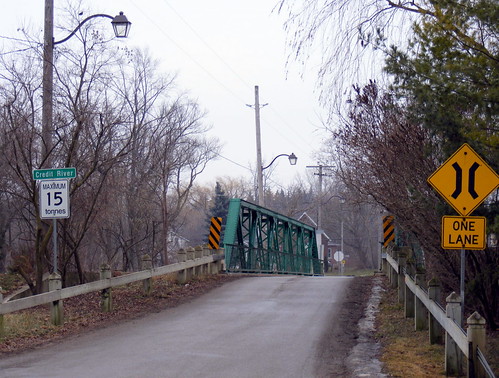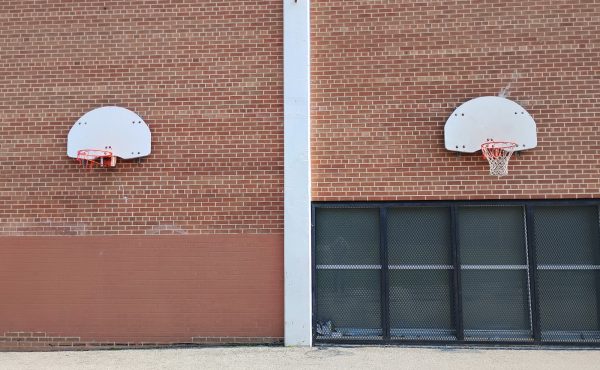Only a mere two kilometres north of Meadowvale, in Brampton, is another “lost” village, Churchville. Both communities share a lot in common: both were established as mill towns on the Credit River, both were served by the Credit Valley Railway when it arrived in the 1870s and the Toronto Suburban Railway, which ran from 1917 to 1931. Both are removed from major roadways, perhaps helping their survival.
In “Toronto’s Lost Villages” by Ron Brown, published in 1997 and one of the inspirations for this series, the author lamented that Churchville was about to be inundated by suburban development. Luckily, because of strengthened historical interest, and the proximity of floodplains that restrict new development, it remains relatively intact and somewhat interesting.
Churchville was the most northerly settlement in Toronto Township (which in 1968 became the Town of Mississauga) and is somewhat older than Meadowvale, established in 1815. At its peak, Churchville had several stores, a church, a hotel, mills and other local services. An ambitious network of streets was laid out, some of which do not exist today, but still appear on some maps (such as the Google Map linked above). After a a period of growth, the population level stagnated after nearby Brampton grew larger with the 1856 arrival of the Grand Trunk Railway and designated as the county seat. Many of the stores left, the mill was lost to time, and fire destroyed at least one of the churches.
Wesleyan Methodist Chapel, built 1856, the last surviving religious structure.
It wasn’t until the 1960s, when some exurban development grew around the fringes of the villages, that the population expanded again. In 1974, Churchville became part of the City of Brampton, and separated from Meadowvale from a new “Greenbelt” (which eventually became little more than a utility and highway corridor). But Brampton’s sprawl did not reach Churchville, deep in the Credit Valley, until the last decade. Happily, though, as with Meadowvale, residential development now completely surrounds the historic core, yet it is set back enough as to now fully overwhelm it.
On Steeles Avenue, a historic farmhouse at Creditview Road is being preserved and restored by the city, perhaps for a new local park. Note the new suburban houses in the background.
Amongst the only remaining services left are a small Wesleyan chapel, a large, well-maintained cemetery, and one of two remaining volunteer fire stations in Brampton. A new large station on Mississauga Road is scheduled to open late this year, staffed by a professional crew, which will replace this station, and the one in nearby Huttonville.
Interestingly, Brampton has chosen to preserve two local one-lane bridges. A steel truss in the centre of Churchville is in excellent condition, and is unlikely to be replaced as traffic levels remain low. North of Steeles, towards Eldorado Park (an early electric park run by the Toronto Suburban) an elegant concrete arch bridge was recently restored.











4 comments
I always like how the old towns break up the suburban land use pattern. It’s like a knot in a piece of wood.
Interesting, I like the shots of the old bridges. Such bridges are currently being replaced by newer structures in the mid part of Halton and its great that they were preserved here. It seems that for a village like this to survive it has to be cut off from main arteries. Palermo in northwest Oakville is an interesting historic town, but feels like it was washed away as its main intersection became a busy thoroughfare.
I’m struggling a bit with the notion of these villages being kept as they are. To me, an important part of heritage conservation is making sure the place remains “alive” or relevant to present and future generations.
Maybe it’s just the photos, but these places look dead. This might be because of the conscious effort to cut them off from surrounding suburban development. I think this may be the wrong approach– there are ways to integrate these villages into new development while reinforcing and, indeed, taking advantage of the heritage element. (There was some of this going on in Meadowvale, as I recall.) I would consider Markham Village and Unionville in Markham to be of this mould– would one consider these “lost villages”? I would think not, given their relevance to the local community. I will acknowledge that there is a fine line between good village conservation and caricature, but I think Markham and Unionville walk that line without crossing it.
I’m not sure what the policies of Mississauga or Brampton are with regards to these places, but it seems to me like they are being isolated rather than integrated, and that would be a mistake.
I used to go fly fishing at Churchville Park with my grandfather. I remember really getting to appreciate the taste of an ice cold Vernor’s on a hot day.
Joel – You’re right, this place does look dead in these photos, but then, Winter is the season of death. If you go to google maps and use street view to explore Churchville, you’ll cruise past people out for a stroll and kids riding around on bikes.
http://maps.google.ca/maps?f=q&source=s_q&hl=en&geocode=&q=churchville&sll=43.6679,-79.370984&sspn=0.009747,0.022724&ie=UTF8&hq=churchville&hnear=&ll=43.634864,-79.760275&spn=0,359.99716&z=19&layer=c&cbll=43.634643,-79.760277&panoid=6Nx7yv5aDrGXP_x9RHsy4g&cbp=12,147.27,,0,18.17